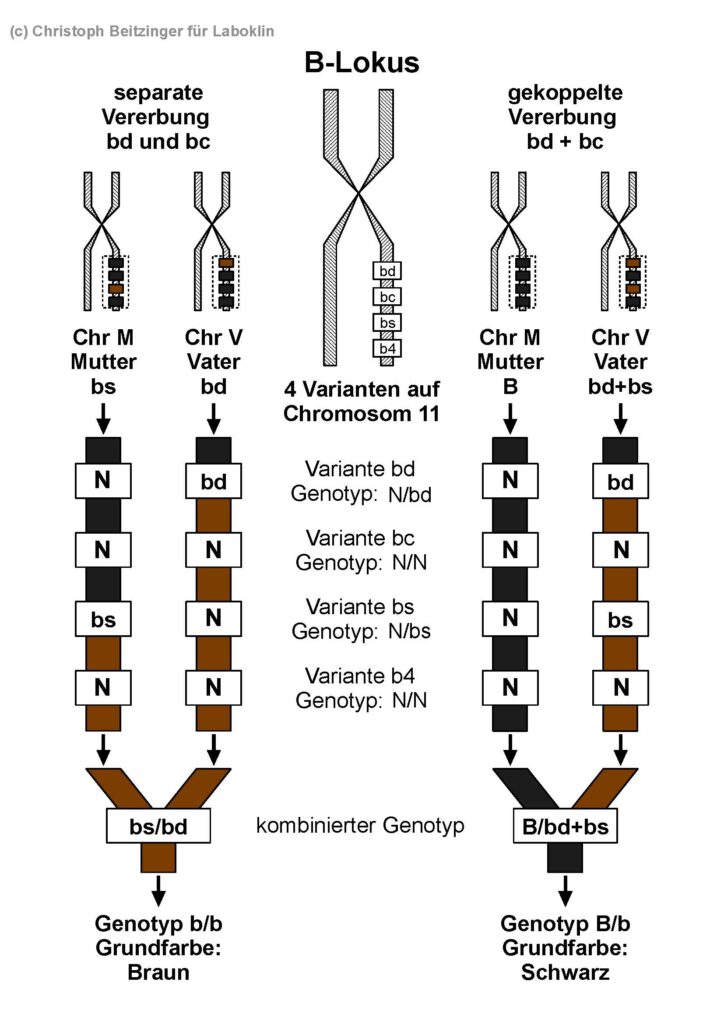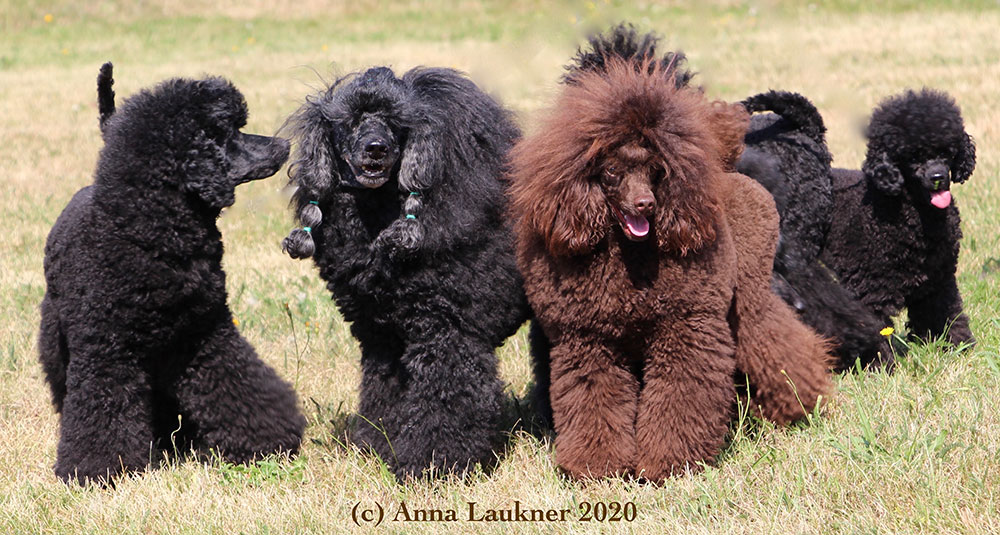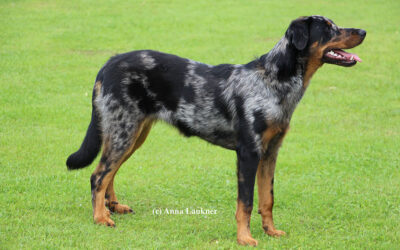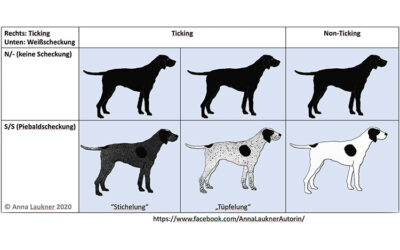For many dog owners, the findings at the B-locus are confusing. With these charts I would like to enlighten this topic. Formerly, the results for locus B were given with B = black and b = brown.In the meantime, however, so many different variants b are known (for each of which a separate test is performed) that most laboratories have switched to diagnose the absence of a variant b not with B, but with N. Theoretically, it would therefore only make sense to set N = B if the B locus (the TYRP1 gene) was completely sequenced and no variant b could be detected there at all. However, this is not possible under normal laboratory conditions. Depending on the breed, the three most common (bc, bd, bs) and possibly others (b4 in Aussies, be in Lancashire Heelers) are tested. In practice, this allows a meaningful statement about whether a dog has variants b or not.
Here are a few examples illustrated in charts (there are many more possible variations, of course):
Picture 1:

Picture 2:

Picture 3:

Picture 4:

Picture 5:

A special case is shown in picture 6: Here, a dog has two different variants b on the same chromosome. In the genetic test it cannot be distinguished whether the variants are on the maternal or the paternal chromosome. This can explain test results in which two or more different variants b have been detected, but the dog in question still has black pigment (In this example, only the B loci Bc, Bd, Bs and B4 are shown for clarity. The result for each single absent variant b is descripted as N, the cummulative result of all absent variants b on the whole chromosome is descripted as B).
Picture 6:

Important note: The genotype b/b doesn´t mean a dog is necessarily brown. The base color of a dog is determined by many different color genes. So, a b/b dog could also be recessive yellow with brown nose, for example. Similarly, a B/B or B/b dog doesn´t need to be black, but could be recessive yellow with black nose, for example.
B doesn´t mean necessarily black coat colour, but absence of brown eumelanin.





Recent Comments